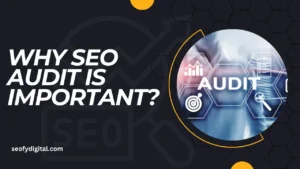In today’s digital age, visibility is everything. With millions of websites competing for attention, getting noticed online is one of the biggest challenges for businesses. Imagine running a local store and realizing that most of your customers came to you simply because they found you online.
This kind of discovery doesn’t happen by chance. It’s the result of smart, targeted strategies like Search Engine Optimization (SEO) and Search Engine Marketing (SEM). These two strategies might sound technical, but their impact is profound. SEO and SEM are the cornerstones of online success for countless businesses.
When used effectively, they work together to increase traffic, generate leads, and boost brand visibility. What’s intriguing is how SEO, with its focus on organic reach, and SEM, with its paid advertising tactics, combine to make a powerful strategy. They might seem like separate paths, but together, they’re a winning formula for reaching potential customers and achieving sustainable growth.
This blog will guide you through how SEO and SEM work individually, and how, when united, they can skyrocket a brand’s online presence. From understanding the basics of each to exploring actionable tips on creating a successful integrated strategy, you’ll discover why merging these two forces is essential in today’s competitive digital space.

Contents
Understanding SEO and SEM
1. SEO (Search Engine Optimization):
SEO is the process of optimizing a website to improve its visibility in organic search engine results. This involves multiple strategies:
- On-page SEO: Includes keyword optimization, meta tags, and creating high-quality content.
- Off-page SEO: Focuses on building backlinks, engaging on social media, and other external efforts.
- Technical SEO: Ensures the website is fast, mobile-friendly, and optimized for search engines.
2. SEM (Search Engine Marketing):
SEM encompasses strategies that use paid advertising, primarily pay-per-click (PPC) ads on search engines. SEM allows businesses to:
- Bid on keywords: Display ads for specific search terms that potential customers might use.
- Target specific audiences: Using PPC ads to appear on search engine results pages (SERPs) allows for precise targeting and immediate visibility.
How SEO and SEM Work Together
1. Shared Goals:
Both SEO and SEM aim to increase website traffic, improve lead generation, and enhance brand visibility. Working together, they create a seamless flow of organic and paid traffic to a website.
2. Complementary Strategies:
- Keyword Research: Both SEO and SEM rely on extensive keyword research to identify terms that attract the target audience.
- Landing Page Optimization: For both organic and paid traffic, optimized landing pages increase engagement and conversion rates.
- User Experience (UX): Websites that are user-friendly improve SEO ranking and help SEM campaigns by reducing bounce rates.
- Brand Awareness: A strong presence in both organic and paid search results amplifies brand recognition and credibility.

Best Practices for Integrating SEO and SEM
1. Keyword Strategy:
Develop a unified keyword strategy that aligns SEO and SEM, focusing on short-tail and long-tail keywords for broader coverage.
2. Landing Page Optimization:
Create high-quality landing pages that not only rank well but also convert well. Ensure they have relevant content, calls-to-action, and are mobile-optimized.
3. User Experience:
A seamless user experience, with fast load times, easy navigation, and a mobile-friendly interface, benefits both SEO and SEM. Good UX keeps users on the site, boosting SEO and maximizing ad spending efficiency.
4. Tracking and Analytics:
Use analytics tools to monitor the performance of SEO and SEM campaigns. Tracking allows for data-driven decisions and adjustments that improve outcomes.
5. Budget Allocation:
Assess your business goals and allocate the budget between SEO and PPC strategically. Some businesses may need a larger PPC budget initially, while others might benefit from focusing more on SEO for long-term results.
Case Studies
1. Showcase Real-World Examples:
For instance, a mid-sized e-commerce site used SEO and SEM in tandem to increase its visibility. By targeting popular product keywords, they gained a foothold in organic search while driving immediate traffic through PPC.
2. Highlight Key Takeaways:
The success stories illustrate the importance of continuous optimization, data analysis, and focusing on a long-term approach. Businesses that integrated both SEO and SEM saw more consistent traffic and improved brand recognition.
Conclusion
Combining SEO and SEM creates a robust digital strategy that drives traffic, builds credibility, and attracts potential customers. While SEO builds a strong foundation for organic growth, SEM provides immediate visibility. Together, they cover both short-term and long-term goals, giving businesses a competitive edge.
Looking ahead, trends like voice search and AI are reshaping the SEO and SEM landscape. Staying updated with these trends ensures your strategies remain relevant and effective. By embracing an integrated SEO and SEM approach, businesses can unlock new opportunities for growth and gain a strong online presence.
FAQs
1. What is SEO?
SEO, or Search Engine Optimization, is a strategy to improve a website’s visibility in organic search results.
2. What is SEM?
SEM, or Search Engine Marketing, involves paid ads on search engines to reach specific audiences immediately.
3. How does SEO complement SEM?
SEO offers long-term visibility, while SEM provides instant exposure, allowing businesses to reach potential customers through both organic and paid results.
4. Is it better to invest in SEO or SEM?
Both are essential. SEO is ideal for building a long-term online presence, and SEM is effective for immediate traffic and conversions
5. How does keyword research benefit SEO and SEM?
Keyword research identifies search terms to target for both strategies, helping improve search rankings and ad performance.
6. What’s the role of landing pages in SEO and SEM?
Optimized landing pages enhance user experience and conversion rates, supporting both organic and paid campaigns.








